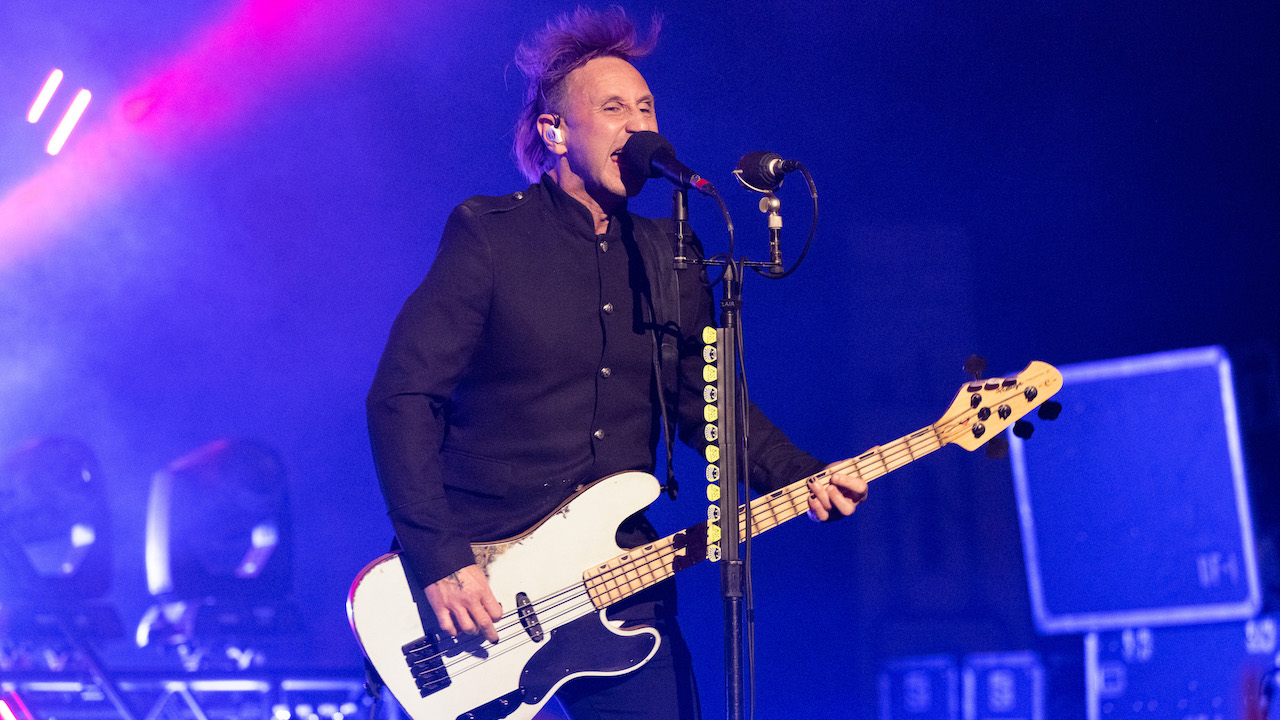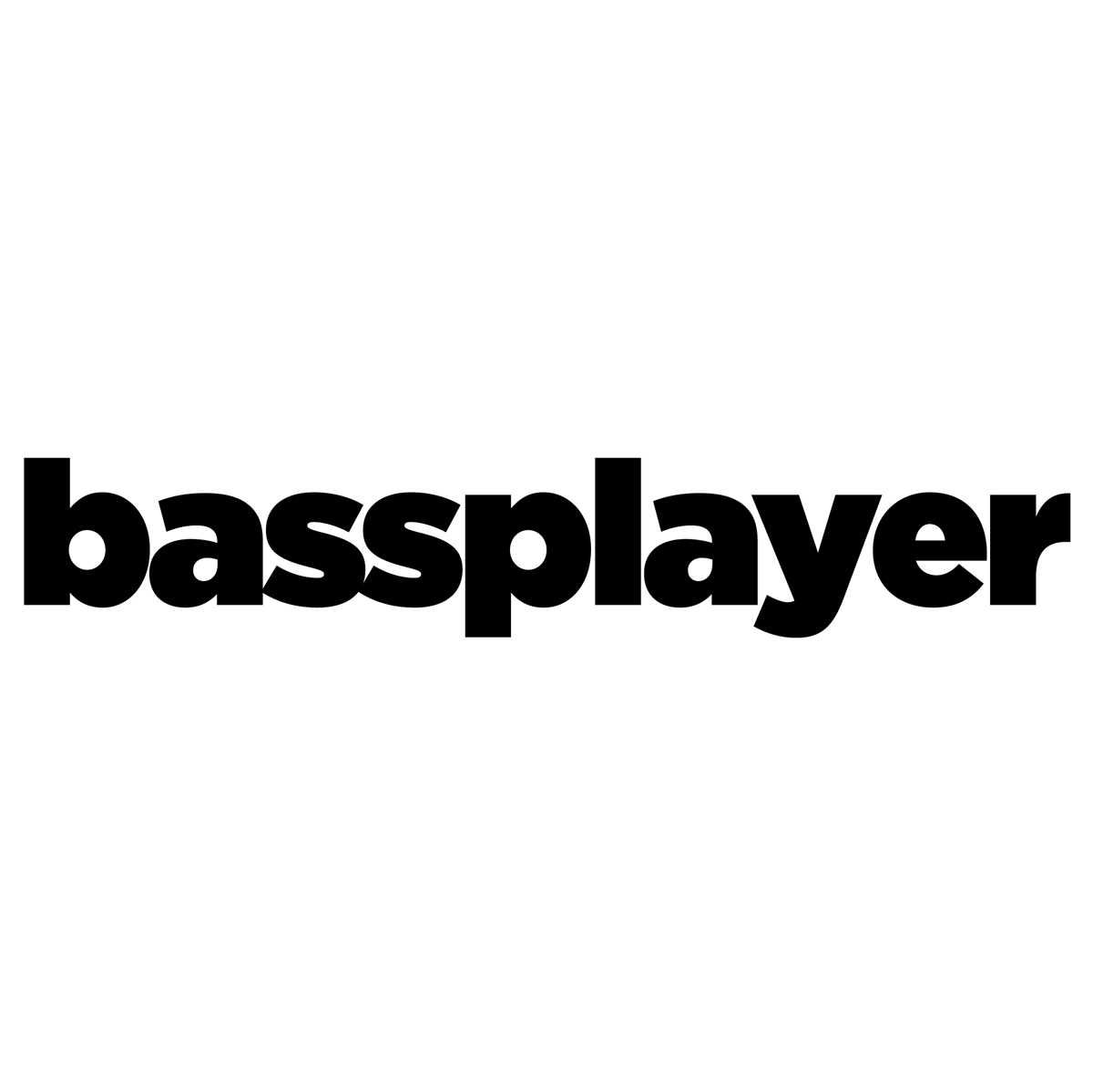Shinedown’s Eric Bass looks back at the band's top five bass albums
On the eve of Shinedown’s Planet Zero Tour, Eric Bass revisits five of the band’s classic LPs

Eric Bass is the low-end hero with Shinedown, a group he joined in 2008. Entirely self-taught, he is a continual student of sound and is an in-demand engineer, producer and mixer. Bass also plays keys and sings with his band, and his ability on multiple instruments makes him a Musician with a capital M, though he can – and does – rock out with the best of them.
Bass has also learned the power of patience over the years, as he says: “If you’re practising to become better, but you’re not ready to immerse yourself and become great in the moment that you need to accomplish something, then turn the gear off, go chop some firewood, and come back. It’s not always gonna be easy: sometimes it’s mind-numbingly difficult, but if you put the time in, it will always happen."
Wisdom indeed. Of course, Eric has plenty more to share, whether that’s about technique, studio approach or the power of the bass guitar to smash expectations, all explained through the prism of five Shinedown albums...
1. Shinedown - The Sound of Madness (2008)
“This was the first record that I joined Shinedown for, and it is a fantastic rock’n’roll record. I’d met frontman Brent Smith and Barry Kerch the drummer already, because I’d been a record producer and writer for a while and I knew Steve Robertson, their A&R rep at Atlantic. Steve asked me if I’d like to work with them, but I didn’t know who they were as I was so buried in the recording studio at that time. So he sent me some stuff and man, they were a great band, so I said I’d like to work with them in a songwriting capacity. Then they left the studio and I didn’t see them until after The Sound Of Madness had been recorded. It was not a record that I played on, but it was hugely influential for me because Chris Chaney of Jane’s Addiction played on it: he’s a phenomenal player and a very busy session guy in LA.
Chris Chaney used a pick, while their original bassist Brad Stewart played exclusively with his fingers, so my job was to meld those worlds together.
Eric Bass
I have always been a multi-instrumentalist: until then bass had been a utility for getting my ideas down. But when I joined Shinedown, I had to learn Chris’s playing, so that’s in my DNA as a bassist. He used a pick, while their original bassist Brad Stewart played exclusively with his fingers, so my job was to meld those worlds together.”
2. Shinedown - Attention Attention (2018)
“On this record I experimented with a lot of different things, like putting the bass through a guitar amp. I often prefer that rather than bass heads and amps; I’ll rely on a DI to take care of the low-end stuff for me, but I want to hear the bass articulated in the mix too. I ran Marshall heads and cabs, and it wasn’t necessarily distorted, but it sat nicely. I was really, really pleased with my playing on the record, too. It’s not super-nerdy and not a lot of notes per minute, but it really is solid and I’m proud of that.
This was where I really came into my own, not only as part of the band but as a bass player.
Eric Bass
I was thinking about Michael Anthony of Van Halen: that’s a song-oriented band with a great guitarist. Michael always has a plan for a song, he’s in there playing what needs to be played. When he does break out of that mould he plays some simultaneous runs with the guitar with his fingers – which made me want to play that style, too. Sonically, with heavier music I do prefer the attack of a pick. Robert DeLeo of Stone Temple Pilots is also a huge influence on me in that sense. If you take out the bass from the riff, the guitar riff just does not work.”
3. Shinedown - Planet Zero (2022)
“I co-engineered, produced and mixed this record. Especially on the heavier songs, I wanted to bring the bass more into the guitar tone. That gives it aggression, grind, and a lot of midrange. Previously, on Amaryllis and subsequent records I tended to play with several different basses depending on what the song needed, but on Planet Zero I picked up my 2008 Gibson Thunderbird and – studio magic. It just sounds so good. Aside from my ’74 P-Bass for bits of softer stuff, the T-Bird is the only one I played on here. It is a beast. It raises its hand and commands attention.
This record is a lot rawer than any other Shinedown albums. I purposefully made a record that had scars on it and didn’t mind showing you the dirt.
Eric Bass
This record is a lot rawer than any other Shinedown albums. I’m tired of records that sound picked-over and perfect, so the Thunderbird became a huge part of that, with growl and aggression all the way through. I treated bass more like a guitar on this record. Even the slower stuff I played with a pick, bringing it into the guitar tone. With my fingers I have a tendency not to dig in super hard, so my tone is a rounded bottom end in that situation. I wanted the feeling that you didn’t know what might happen next.”
Get The Pick Newsletter
All the latest guitar news, interviews, lessons, reviews, deals and more, direct to your inbox!
4. Shinedown - Amaryllis (2012)
“This was the first, official, full-on Shinedown record I played on. We’d done some iTunes session stuff and something like 400 shows or however many it was for The Sound Of Madness tour, so getting into the studio for Amaryllis was a great experience. I’m a self-taught musician, self-taught engineer and producer, and self-taught bass player, so to be able to walk into some of the greatest studios in the world and record with some of the greatest men and women in the business was phenomenal.
By this point I’d played so much bass that it had become part of my DNA.
Eric Bass
By this point I’d played so much bass that it had become part of my DNA. There was no apprehension any more, and I was really beginning to be able to be expressive with the instrument and well into the process of becoming a solid bassist.
I learned so much by working with Doug McCain, the engineer on this. I was like, ‘Well, I flubbed this note, it’s not clean’. He’d say ‘Listen to it. You don’t solo out the bass and chop it up and put it in a grid and make it perfect, because human beings are not perfect’. And that is one of the reasons that this record has so much energy. Doug’s method was to leave some dirt on it.”
5. Shinedown - Threat To Survival (2015)
“This album had four or five different producers and three or four different mix engineers, so it was more of an amalgamation rather than a sit-in-the-studio recording bass deal. Moving from one situation across the country to another one, putting things together, was how it panned out. ‘Cut The Chord’ which is the song I produced on this record, has a big riff on the chorus mixed in with the guitars, and the main bass track is laid down the middle. I played a 1967 Gibson EB hollowbody: I just rolled the low end off of it and played that riff in the right and left hand side with a bass, layering guitars on top of that.
I want to hear nasty stuff in our heavy music, like Lemmy’s sound was.
Eric Bass
Bass pickups are wound differently from guitar pickups because they’re meant for a different purpose. The tones I love don’t sound great on their own, but when they get with the guitars, they become interesting. I want to hear nasty stuff in our heavy music, like Lemmy’s sound was. In my style you’re only gonna get that with high gains.
I don’t run an overdrive pedal with my bass rig. I’ve got Ampeg SVTs into 10” cabs and then a separate guitar rig, a Mojotone into a 4x12.You don’t lose the bass tone – you can add the dirty stuff on top.”
Shinedown’s new album, Planet Zero, is out now. The band is on tour across the US and Europe.
Bass Player is the world’s most comprehensive, trusted and insightful bass publication for passionate bassists and active musicians of all ages. Whatever your ability, BP has the interviews, reviews and lessons that will make you a better bass player. We go behind the scenes with bass manufacturers, ask a stellar crew of bass players for their advice, and bring you insights into pretty much every style of bass playing that exists, from reggae to jazz to metal and beyond. The gear we review ranges from the affordable to the upmarket and we maximise the opportunity to evolve our playing with the best teachers on the planet.










